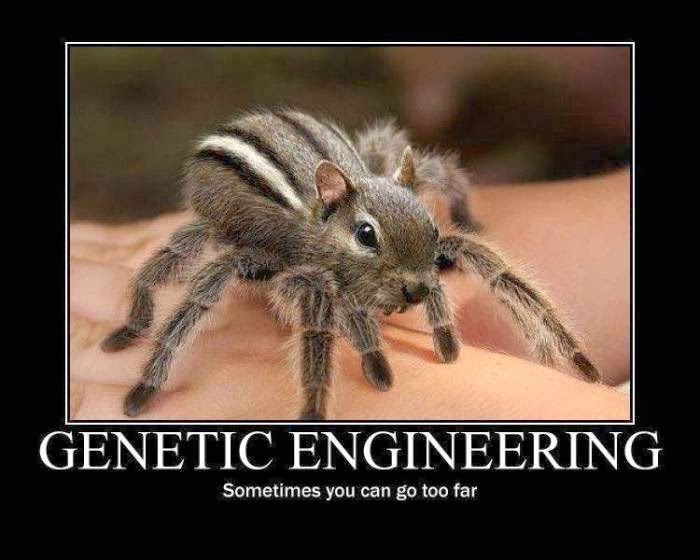Let me begin by confessing that the image I have chosen as a heading to my brief discussion is a bit "over the top" but I hope its sensational nature might get us to pause for further consideration. Chipmunks used to be cute right? Imagine this little monster scurrying across your backyard. That settles it.
But then the image is biased negatively, isn't it?
New developments in genetic engineering recently discussed in the news are generating necessary, useful public debate. As a general practice, it's probably best to enter the discussion without a fixed position either way. A February 19th story on NPR "Should We Prohibit Genetically Engineered Babies?" features an Oxford style debate on this question.
The NPR piece begins with two potently emotional questions: "What if, before your children were born, you could make sure they had the genes to be taller or smarter? Would that tempt you, or would you find it unnerving? What if that genetic engineering would save a child from a rare disease?"
Few of us with children would quickly answer no. But I wonder, do we attribute too much certainty to positive predictions of outcome as if a human being is a just predictable mechanical process? But if we would support the prohibition of genetic engineering then we might be attributing too much certainty to negative outcome, fearing extra fingers, a third nostril or an ear on the forehead and such.
An interesting feature of this debate is that, of the four experts only one, Robert Winston of Imperial College London, has actually practiced genetic engineering, specifically "preimplantation genetic diagnosis" that helped families with a history of genetic defects to have children without them.
I won't review each expert's stand on the motion, but the moderator begins the discussion by calling on Sheldon Krimsky to articulate his support of prohibiting genetic engineering, and he makes an important point that applies to many scientific and social discussions. Krimksy observes that a human being is more than a "Lego set" predictably assembled but more like "an ecosystem where all the parts interrelate and are in mutual balance." Who we become is made over time through the intertwined influences of genetics, nutrition, environment, social practices etc. Changing a gene is not the only factor involved when attempting a desired result.
Nita Farahany who opposes the prohibition of genetic engineering in favor of the "middle ground" of public debate. She makes her case partly by relating the emotional story of a mother who passed on her genetic defect to all six of her children, five of whom died. Her disease is known as Leigh's Syndrome and it could have been prevented through an egg-engineering approach called "DNA transfer" which is questioned by some scientists and being debated by the FDA now.
The good news is that all four participants, two in favor and two against prohibiting genetic engineering, are active in public discussion of the ethical and social implications of scientific discoveries. This is far different from the scientific situation in Brave New World where the primary role of science is to promote stability.
In chapter 16, World Controller Mustapha Mond discusses science with John Savage: "Besides, we have our stability to think of. We don't want to change. Every change is a menace to stability. That's another reason we are so chary of applying new inventions. Every discovery in pure science is potentially subversive; even science must sometimes be treated as a possible enemy. Yes, even science."
